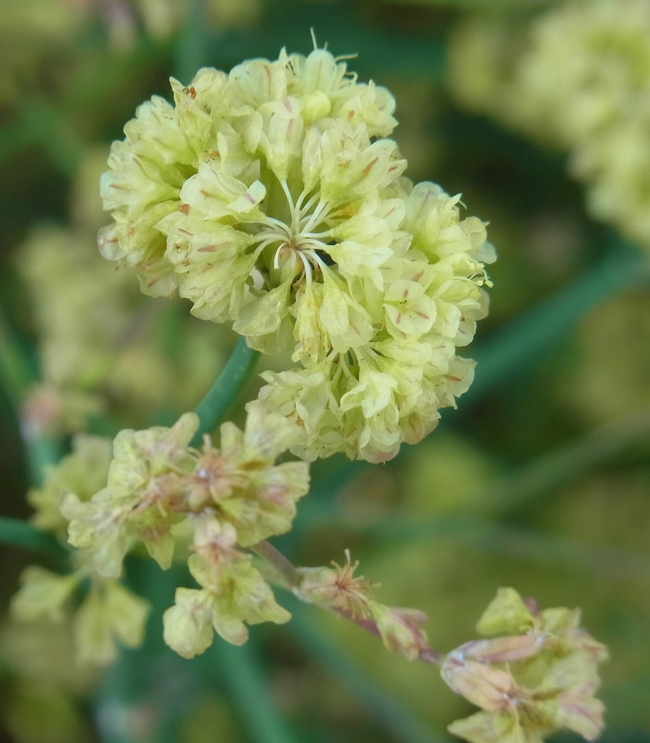Some of the best all-around plants for bees and beneficial insects in the California garden are the buckwheats, Eriogonum spp. Native to California, a selection of just a few species will provide bloom for most of the spring and summer in even the hottest and driest of gardens. These durable plants grow in full sun to part shade and require well-drained soils; plant them on berms to achieve better drainage in heavy soils.
This large genus includes over 125 species, one of the largest genera of California natives. About a dozen of these are sold for landscape use, including both coastal and interior species. The Haven's buckwheat plants host smaller bees along with a diversity of insect natural enemies and butterflies.
Buckwheats in the Haven
California buckwheat, Eriogonum fasciculatum. This plant's slender leaves look similar to rosemary. Roughly four feet tall and wide, this plant has varying growth habits from upright to arching. The latter will root where stems touch the ground. It is covered in small white flowers tinged with pink from June to fall; they turn a rusty red at the end of the season for additional color. Prune back about halfway each fall to keep a dense shape. Native to chaparral regions in the southern half of the state.


Saint Catherine's lace, Eriogonum giganteum. This UC Davis Arboretum All-Star shrub reaches six to eight feet tall and wide; add another foot in each direction for the showy flower stalks. This plant works as a specimen or grouped as a hedge. As with California buckwheat, it flowers from June to fall and then the flowers turn a rusty red. Prune each fall to keep a compact shape and prevent the plant from becoming woody; it will not re-sprout from woody stems. Native to chaparral regions in the southern half of the state.


‘Ella Nelson's Yellow' naked buckwheat, Eriogonum nudum ‘Ella Nelson's Yellow'. Haven visitors have seen this plant's bright yellow flowers for the past three months. The common name comes from its growth habit: the plant dies back to the ground in winter and flower stalks often emerge before the foliage. Cut back spent flowers to encourage additional blooms and prevent numerous seedlings if these are not desired. Native from the coast to the Sierra.


Red buckwheat, Eriogonum grande var. rubescens. Delightful raspberry colored flowers cover this plant in June. It grows to a three-foot wide mound and tends to be relative short-lived in gardens. Native to the Channel Islands, in the Davis area it does best with afternoon shade and water every two to three weeks.
